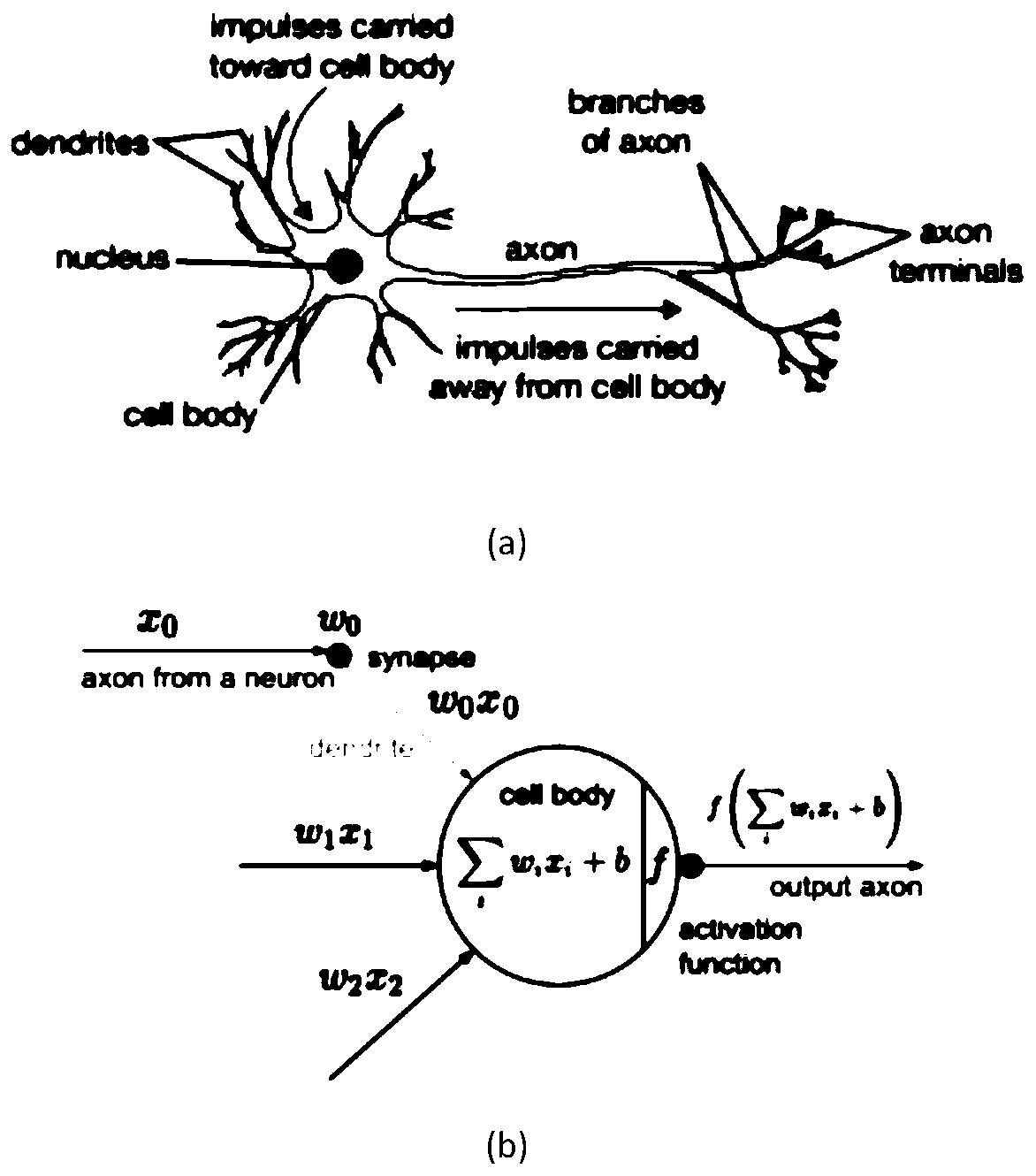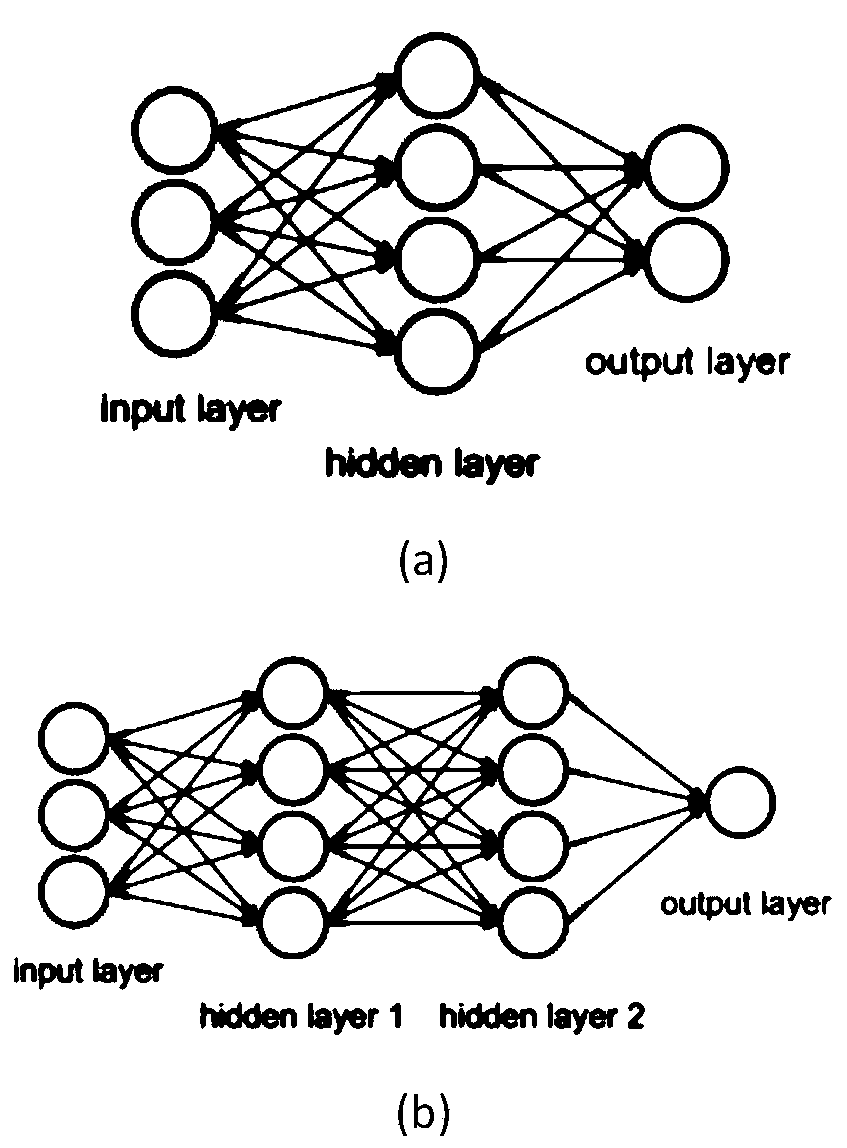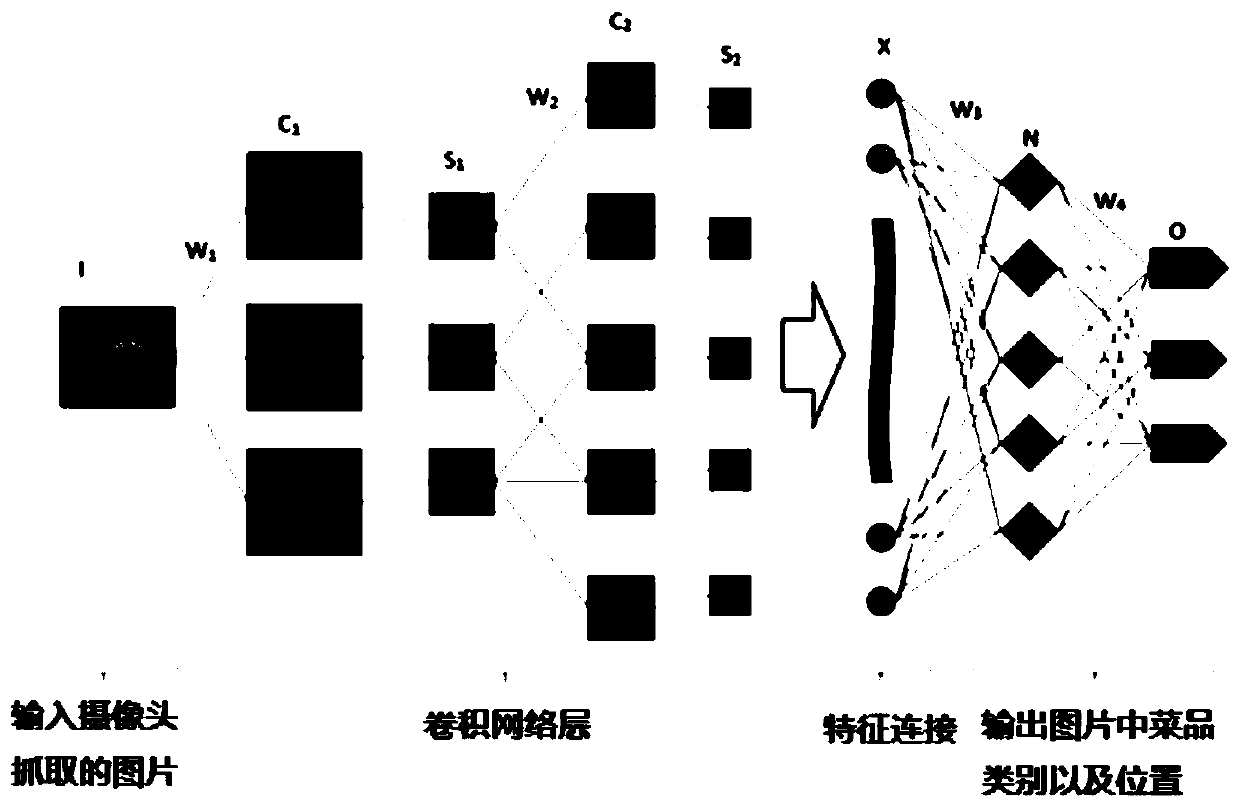Convolutional neural network-based self-service checkout system and convolutional neural network-based self-service checkout method
A convolutional neural network and self-checkout technology, which is applied in the field of self-checkout systems based on convolutional neural networks, can solve the problems of heavy workload of waiters, slow settlement time, and disrupted dining environment, so as to enhance information transparency and reduce waiting. time, the effect of optimizing the user experience
- Summary
- Abstract
- Description
- Claims
- Application Information
AI Technical Summary
Problems solved by technology
Method used
Image
Examples
Embodiment 1
[0057] Embodiment 1 neural network model algorithm
[0058] In recent years, the neural network algorithm has achieved great success in the field of image recognition, especially the deep learning algorithm evolved from the neural network, which can finally enable the entire recognition algorithm to obtain an accuracy rate of more than 90%. Moreover, this scheme can discard the training set after completing the learning, and complete the classification of a picture within one millisecond, and its efficiency can greatly meet the recognition requirements of multiple fields.
[0059] The field of neural network algorithms was originally inspired by the goal of modeling biological nervous systems, but then diverged from it as an engineering problem, with good results in the field of machine learning. The basic unit of computation in the brain is the neuron. There are about 86 billion neurons in the human nervous system, and they are connected by about 10^14-10^15 synapses. Such ...
Embodiment 2
[0064] Self-checkout algorithm of embodiment 2 convolutional neural network
[0065] Convolutional neural networks are very similar to regular neural networks: they are made of neurons with learning-capable weights and biases. Each neuron gets some input data, and after the inner product operation, the activation function operation is performed. The entire network is still a derivable scoring function: the input of the function is the original image pixels, and the output is the score of different categories. In the last layer (often a fully connected layer), the network still has a loss function (such as SVM or Softmax), and various tricks and points implemented in neural networks still apply to convolutional neural networks.
[0066] A simple convolutional neural network consists of various layers arranged in sequence, and each layer in the network uses a differentiable function to pass activation data from one layer to another. Convolutional neural networks are mainly com...
Embodiment 3
[0072] Embodiment 3 Self-checkout method based on the above-mentioned self-checkout algorithm
[0073] In this embodiment, the self-checkout method based on convolutional neural network includes the following steps:
[0074] Step a. Establish a self-checkout system based on the neural convolutional network;
[0075] Step b. photographing the selected dish image information, and identifying the actual selected dish quantity and type in the dish image information through the self-checkout system;
[0076] Step c. Calculate the price and complete the checkout according to the quantity and type of dishes actually selected.
[0077] The specific implementation process is as follows:
[0078] First, collect photos of common dishes in the canteen, identify the corresponding types, and build a dish database. After having the dish database, it is necessary to train the convolutional neural network of the self-checkout system so that the convolution kernel has an appropriate weight f...
PUM
 Login to View More
Login to View More Abstract
Description
Claims
Application Information
 Login to View More
Login to View More - R&D
- Intellectual Property
- Life Sciences
- Materials
- Tech Scout
- Unparalleled Data Quality
- Higher Quality Content
- 60% Fewer Hallucinations
Browse by: Latest US Patents, China's latest patents, Technical Efficacy Thesaurus, Application Domain, Technology Topic, Popular Technical Reports.
© 2025 PatSnap. All rights reserved.Legal|Privacy policy|Modern Slavery Act Transparency Statement|Sitemap|About US| Contact US: help@patsnap.com



